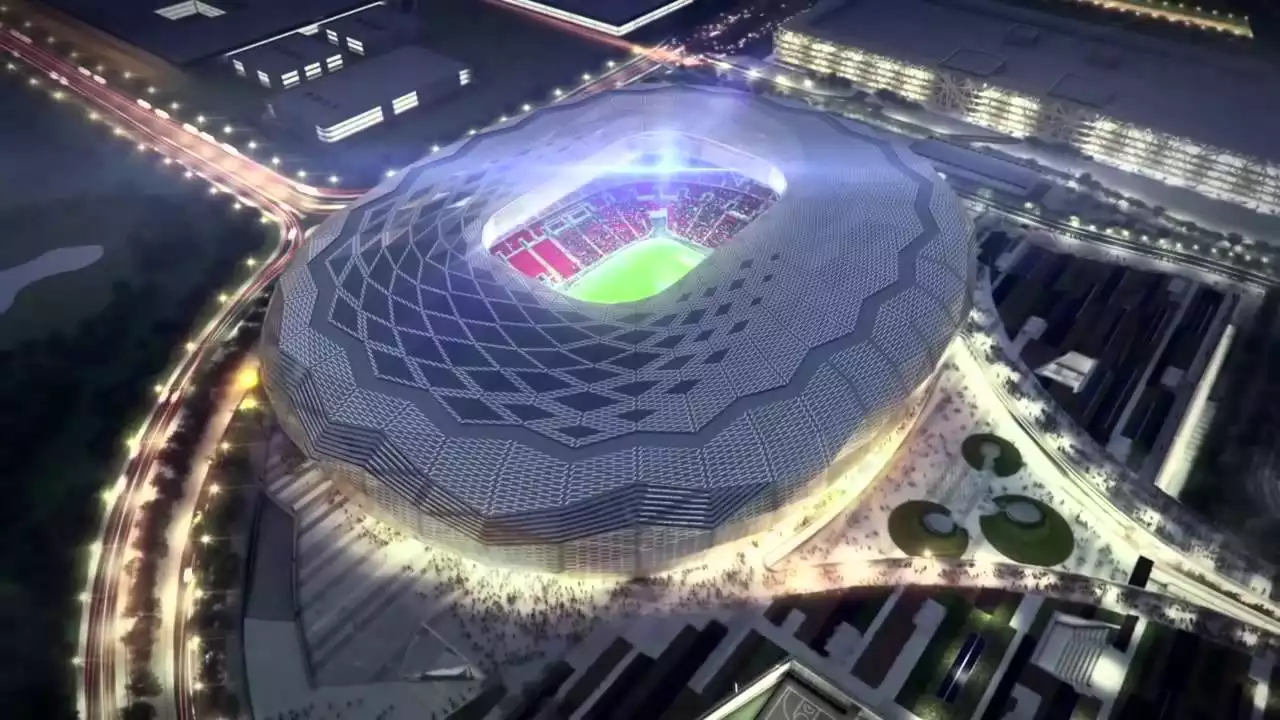The New Doha Stadium will be hosting the final and third-place matches of the 2022 FIFA World Cup in Qatar, as well as being home to the country’s national team. It is located on the south side of Doha with a capacity of 40,000 spectators. The stadium has been designed by British architecture firm Populous, who also designed other stadiums for the FIFA World Cup such as; Samara Arena and Spartak Stadium in Russia, Mordovia Arena in Saransk, Volga Arena in Volgograd, Kazan Arena in Kazan, Kaliningrad Stadium in Kaliningrad and Spartak Stadium in Moscow. The stadium is designed with special cooling techniques that will allow it to remain operational during Qatar’s hot summer months. Moreover, it features a retractable roof that will provide shade for spectators on sunny days so they don't get too hot.
2022 FIFA World Cup
Since being selected as the host nation for the 2022 FIFA World Cup, Qatar has been working tirelessly to expand and modernize its sporting infrastructure. This has seen the city invest heavily in developing new stadiums and renovating existing venues, including the Qatar Foundation Stadium. While the stadium initially had a seating capacity of 25,000, this has since been increased to accommodate more than 40,000 people for major sporting events. The Qatar Foundation Stadium will host a total of five games during the 2022 World Cup, including two Rounds of 16 games, a quarter-final game, and a third-place playoff game.
Doha Stadium Design
The stadium has been designed by British architecture firm Populous, who also designed other stadiums for the FIFA World Cup such as; Samara Arena and Spartak Stadium in Russia, Mordovia Arena in Saransk, Volga Arena in Volgograd, Kazan Arena in Kazan, Kaliningrad Stadium in Kaliningrad and Spartak Stadium in Moscow. The stadium is designed with special cooling techniques that will allow it to remain operational during Qatar’s hot summer months.
Events and Concerts
The Qatar Foundation Stadium has hosted several high-profile sporting events since its opening, including the Asian Athletics Championships in 2011, the IAAF World Relays in 2012, and the 15th Asian Games in 2015. The stadium’s capacity has also been used to host large pop concerts, with artists such as Enrique Iglesias, Jason Derulo, and the Black Eyed Peas performing in front of sold-out crowds. Additionally, it was the site of the first-ever International Beach Soccer Tournament, held in 2009. The stadium’s advanced facilities and large seating capacity make it a prime location for hosting a variety of sporting and cultural events, and it is likely to remain high in demand following Qatar’s hosting of the FIFA World Cup.
Qatar World Cup Final Game
The FIFA World Cup 2022 final will take place at the New Doha Stadium in Qatar. The final game for the Qatar World Cup is expected to draw millions of fans from around the world. Doha Stadium is expected to host a capacity crowd for the final game. The stadium has been specially built to host the final match. It features state-of-the-art cooling techniques, as well as a retractable roof that will provide shade for spectators on sunny days so they don't get too hot. There is also a giant screen that will allow fans to watch the game as if they were in the stadium itself. The New Doha Stadium will host the final match of the 2022 FIFA World Cup in Qatar. The stadium has been specially built to host the final match.
Qatar Stars League
The Qatar Foundation Stadium is the home ground of Al Rayyan SC, one of the most successful football clubs in the Qatar Stars League. With an average stadium attendance of around 20,000, the stadium is host to 17 home games every year. As well as being the venue for Al Rayyan’s home games, the stadium is used as a training facility for Qatar’s national team, and as a host stadium for international tournaments and friendlies.
Changes for the FIFA World Cup
The Qatar Foundation Stadium has undergone several renovations in preparation for hosting games at the 2022 World Cup. These include improvements to the stadium’s roof, air-conditioning system, press box, and players’ changing rooms. Furthermore, new high-tech scoreboards have been installed, and the pitch has been replaced with an artificial grass surface. The stadium’s seating capacity has also been increased, with the addition of extra tiers of seating being constructed around the pitch. In addition to these renovations, a new Media and Broadcast Centre has been built next to the stadium, which will be used to host press conferences and other major events leading up to and during the tournament.
Conclusion
The Qatar Foundation Stadium has become a leading sporting and cultural venue since its opening in 2011 and continues to host major events today. Following renovations for the 2022 FIFA World Cup, it is likely that the stadium will retain this reputation and attract more high-profile sporting and cultural events in the future. The stadium has been used to host a variety of events, including sporting competitions, pop concerts, and major conferences. It is a prime example of Qatar’s commitment to developing a world-class sporting infrastructure and will continue to attract major sporting and cultural events in the future.

 Al Wakrah Stadium - FIFA World Cup 2022
Al Wakrah Stadium - FIFA World Cup 2022 Al Bayt Stadium in Qatar - FIFA World Cup
Al Bayt Stadium in Qatar - FIFA World Cup A look at Khalifa International Stadium
A look at Khalifa International Stadium